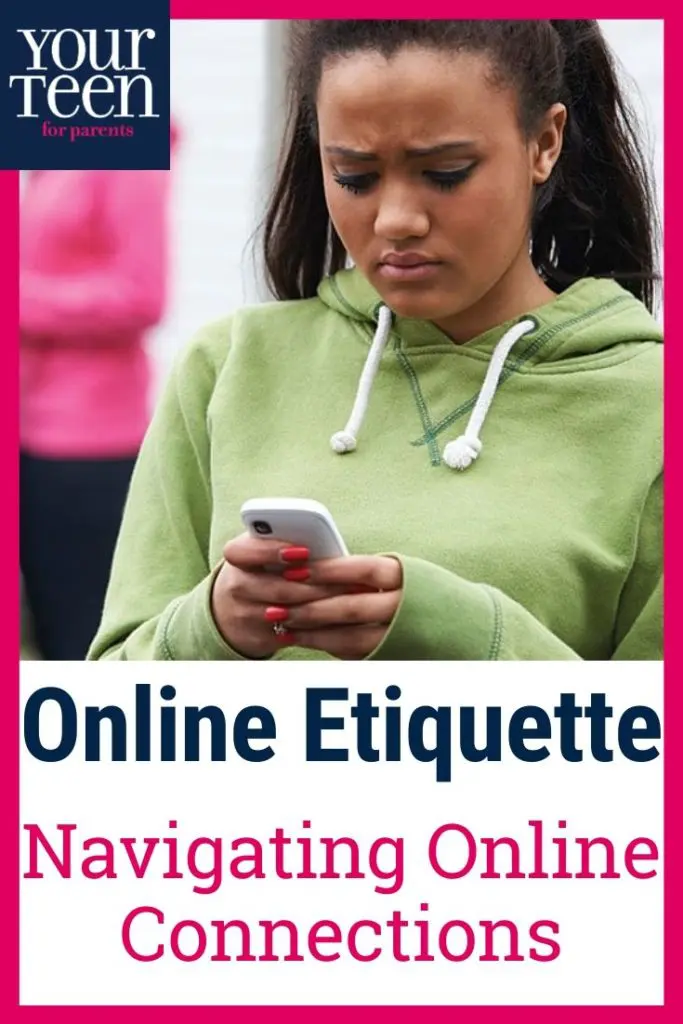“She unfollowed me on Instagram, Mom. I tried to talk to her, but she ignored me.”
My 13-year-old daughter, Nandini, did not understand why a friend reacted to a minor disagreement with this bold, mean move. I yearned to provide my daughter with an immediate solution for her tears and angst, but my own teen years provided no context for the digital aspects of friendship. In time, the girls worked out their conflict and became friends again, but this peacemaking occurred in person and not on social media.

Teen friendships have taken on a new dimension with the added element of digital media, and trends indicate that the technological aspect of relationships is here to stay. According to a Pew Center study in 2015, 79% of all teens instant message their friends, 72% spend time with pals via social media, and 64% use email. With increasing digital interaction within friendships, teens (and their parents) are more likely to face conflicts like my daughter’s. But by teaching our kids “digital etiquette,” we can help them minimize the rough patches and responsibly work through those that still arise.
It’s Not All Bad
The solution isn’t just to ban digital contact with friends; online connection can offer valuable ways to deepen in-person relationships. “The pros of digital friendships allow teens to have more access to social support from their friends apart from their everyday face-to-face interactions at school or extracurricular activities,” says Matthew Koury, M.D., a child and adult psychiatrist in California. “Teens may feel more comfortable confiding or sharing more sensitive information from behind a screen, which may make it easier for them to receive support from their friends.”
Plus, it’s fun. My daughter, an only child, loves the emoji texts and banter of Instagram, and she uses FaceTime to connect and talk with her friends. And these interactions go well—until they don’t.
Setting Tech Boundaries
One of the most important lessons for teens is that digital interaction has limits. Sometimes phones need to be put down when everyone needs a break, or when disagreements arise. “Teens must respect each other’s boundaries,” says Devorah Heitner, Ph.D., founder of the blog Raising Digital Natives and author of Screenwise: Helping Kids Thrive (and Survive) in Their Digital World. Naturally, that means refraining from harassing or annoying behaviors.
Koury agrees teens sometimes need to step back and “be mindful about not sending messages at inappropriate hours and respect boundaries and rules that their friends’ parents may be setting for their phone usage.”
Even among friends, misunderstandings can happen. “Teens may misunderstand the context, tone, or expected frequency of contact in digital communication. This can increase feelings of depression or anxiety,” says Koury. That’s another time to step back from the screen.
“If a friendship issue comes up, try to handle it face-to-face,” says Heitner. “Texting should be about basic information and making plans, but not about complicated issues.”
Discuss It
To maximize the pros of digital technology and strengthen friendships, teens can talk together about digital guidelines and expectations before conflicts occur. This can lessen anxiety and hurt feelings when an unfollow on Instagram occurs, a text thread becomes too volatile, or there’s an unanswered text or a misinterpreted social media posting.
Agreements will vary by friend group. But it might include things like vowing to take all disagreements offline or agreeing on a no-judgment emoji that anyone can post that means, “I need a sleep/family/homework/relaxation break from this group text. I’ll be back soon.”
What if your child’s peers aren’t into this kind of discussion? Regardless of the way their peers—friends or not—decide to act, we can always emphasize that “the same rules of social etiquette that we teach our teens in real life apply when interacting on social media. Kindness, respect, and empathy are always important,” says Koury.

Rules of Engagement
Sometimes teens need practical advice for digital interactions. Try sharing these tips from Koury and Heitner:
- If you wouldn’t say it to someone’s face, don’t say it online.
- Consider anything that you text or post via social media to be permanent, even if you think it can be deleted. Double check what you write before hitting send.
- Check your emotional register by asking the following questions: “Am I feeling reactive (emotional) or am I feeling responsive (rational)?” A teen who’s feeling reactive should pause before responding, to avoid acting in a way they might regret later.
- If in doubt about a digital interaction, have a face-to-face conversation.
- Don’t share screenshots of your communications, even if you’re looking for advice from another friend about how to respond.




